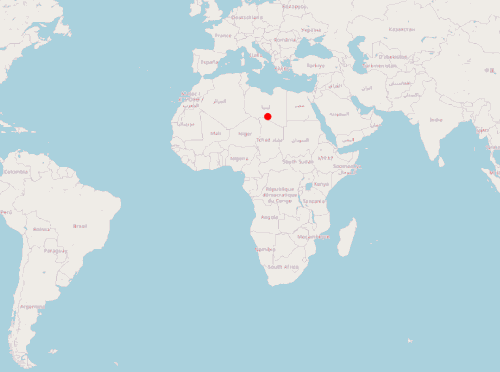前言
本系列文章介绍一个简单的实时定位示例,示例的组成主要包括:
- 服务后端,使用 Java 语言编写,模拟生成 GeoJSON 数据。
- 前端展示,使用 Vue + OpenLayers ,负责定时向后端服务请求 GeoJSON 数据,并在以标签的形式展现定位数据。
实现的效果:

一、定义标签样式
var image = new CircleStyle({
radius: 5,
fill: new Fill({
color: "rgba(255, 0, 0, 1)"
}),
stroke: new Stroke({ color: "red", width: 1 })
});
var styles = {
Point: new Style({
image: image
})
};
var styleFunction = function(feature) {
return styles[feature.getGeometry().getType()];
};
二、模拟 GeoJSON 数据
var geojsonObject = {
type: "FeatureCollection",
features: [
{
type: "Feature",
geometry: {
type: "Point",
coordinates: [0, 0]
}
}
//此处可以添加更多 feature
]
};
三、创建 VerctorLayer
//读取 GeoJSON, 将其作为 vectorSource 的数据源
var vectorSource = new VectorSource({
features: new GeoJSON().readFeatures(geojsonObject)
});
var vectorLayer = new VectorLayer({
source: vectorSource,
style: styleFunction
});
四、构建地图
mounted() {
this.map = new Map({
layers: [
new TileLayer({
source: new OSM()
}),
vectorLayer
],
target: "map",
view: new View({
center: [0, 0],
zoom: 2
})
});
//设置定时任务,调用移动标签方法
setInterval(this.translate, 500);
},
五、模拟实时移动
methods: {
translate() {
//遍历标签, 修改坐标位置
vectorSource.forEachFeature(function(f) {
console.log("translate");
//随机产生坐标增量(此处不是坐标绝对值!!!!)
var x = Math.random() * 1000000;
var y = Math.random() * 1000000;
f.getGeometry().translate(x, y);
});
}
}
总结
以上是一个简单实时定位前端示例,通过模拟的 GeoJSON 对象展示标签,并通过定时任务模拟标签位置变化。下一篇将使用 Java 服务端提供位置数据,完整模拟一个实时定位系统。
可以在vue项目中直接运行的完整代码:
<template>
<div>
<span>hi, map</span>
<div id="map" class="map"></div>
</div>
</template>
<script lang="ts">
import "ol/ol.css";
import GeoJSON from "ol/format/GeoJSON";
import Map from "ol/Map";
import View from "ol/View";
import { Circle as CircleStyle, Fill, Stroke, Style } from "ol/style";
import { OSM, Vector as VectorSource } from "ol/source";
import { Tile as TileLayer, Vector as VectorLayer } from "ol/layer";
import Vue from "vue";
var image = new CircleStyle({
radius: 5,
fill: new Fill({
color: "rgba(255, 0, 0, 1)"
}),
stroke: new Stroke({ color: "red", width: 1 })
});
var styles = {
Point: new Style({
image: image
})
};
var styleFunction = function(feature) {
return styles[feature.getGeometry().getType()];
};
var geojsonObject = {
type: "FeatureCollection",
features: [
{
type: "Feature",
geometry: {
type: "Point",
coordinates: [0, 0]
}
}
]
};
var vectorSource = new VectorSource({
features: new GeoJSON().readFeatures(geojsonObject)
});
var vectorLayer = new VectorLayer({
source: vectorSource,
style: styleFunction
});
export default Vue.extend({
data() {
return {
map: {}
};
},
mounted() {
this.map = new Map({
layers: [
new TileLayer({
source: new OSM()
}),
vectorLayer
],
target: "map",
view: new View({
center: [0, 0],
zoom: 2
})
});
setInterval(this.translate, 500);
},
methods: {
translate() {
vectorSource.forEachFeature(function(f) {
console.log("translate");
var x = Math.random() * 1000000;
var y = Math.random() * 1000000;
f.getGeometry().translate(x, y);
});
}
}
});
</script>
<style>
.map {
width: 100%;
height: 600px;
}
</style>
到此这篇关于VUE + OPENLAYERS实现实时定位功能的文章就介绍到这了,更多相关VUE OPENLAYERS 定位内容请搜索自学编程网以前的文章或继续浏览下面的相关文章希望大家以后多多支持自学编程网!

- 本文固定链接: https://zxbcw.cn/post/221528/
- 转载请注明:必须在正文中标注并保留原文链接
- QQ群: PHP高手阵营官方总群(344148542)
- QQ群: Yii2.0开发(304864863)
